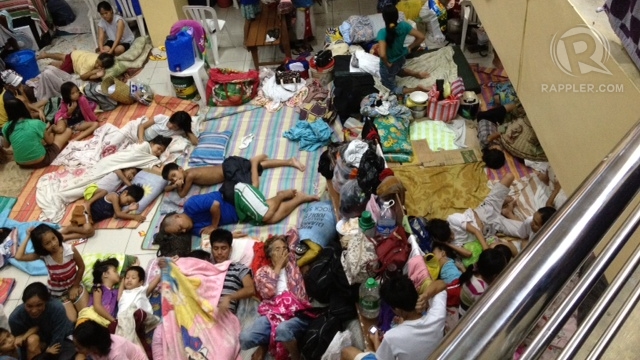SUMMARY
This is AI generated summarization, which may have errors. For context, always refer to the full article.

Editor’s Note: Alison Laporte-Oshiro was a Princeton-in-Asia fellow who lived and worked in the Philippines for Save the Children from 2009-2010. She worked for the US Institute of Peace in Washington, DC, and was in Manila on vacation last week. When the floods hit, she changed her flight out to volunteer to help in relief operations with Save the Children.
Whenever I read reports of a flood, I imagine a powerful river, swift-moving and ice-cold. The Colorado River transplanted to an unsuspecting town.
The flooding in Manila, Philippines is nothing like that.
Manila has seen two weeks of persistent, torrential rainfall – a mix of a lingering typhoon and the southwest monsoon. More than 3 million people are now estimated by local authorities to be affected, with 440,000 in just 940 evacuation centers.
A patch of blue sky emerged overhead Thursday, but the emergency is far from over. The accumulated rainfall now fills many of Manila’s streets – stagnant, stinking, and swill-like. It barely moves, even as people, bicycles, motorbikes, make-shift boats, and vehicles plow through the water to work, mass, or the market.
In some areas, the water rose to chest level, and in extremely flooded areas, head-high. It is hard to see more than a few inches deep, but every imaginable thing seems to be floating in the water. The flood seemed to have brought all of Manila’s grit and garbage to the surface. There is nothing cleansing about this flood.
It is a familiar sight. I was in Manila in 2009 when Typhoon Ondoy (international name Ketsana) hit. It triggered the worst flooding in decades – Manila Bay and the nearby lake expanded, rivers overflowed their banks, and homes filled with water.
The floods did not subside for several months. Human and rodent excrement found their way into the water, unleashing a deadly cholera and leptospirosis epidemic. Working in the evacuation centers around Manila, I met parents who lost their children in just hours to diarrhea.
So despite the break in the weather, I continue to worry that this could be a repeat of Typhoon Ketsana. All of the conditions for disease are present, such as standing and polluted water, inadequate – or nonexistent – sanitation, as well as hundreds of thousands of people in tightly-packed evacuation centers.
I visited an evacuation center where over 60 people sleep in 3 school classrooms and share one toilet. Because of the standing water, the city shut off electricity in the area, so the toilet does not flush.
Another evacuation center is so crowded that several families live in an abandoned building on the grounds. They designated an open area under the staircase as the “bathroom,” where children are told to defecate.
Children should not be made to live in such conditions. All children, including those in disaster conditions, have the right to a decent standard of living. So much is needed – potable water, emergency toilets, bathing facilities, promotion of sanitation practices, mobile medical clinics, medicine, and more. Help needs to arrive, quickly. – Rappler.com
Save the Children has reached nearly 1,900 families with household items, jerry cans of water and hygiene kits in Manila, National Capital Region and Laguna. Save the Children has been working in the Philippines for the last thirty years. Last year, it directly reached 822,000 children across the country, through programs in child protection, education, health and nutrition, child rights governance and humanitarian crises. This blog first appeared here.
Add a comment
How does this make you feel?
There are no comments yet. Add your comment to start the conversation.